I walked Shodosima 88 in fall of 2016. After my first pilgrimage, the Shikoku 88 in fall of 2015, I got totally hooked on long-distance walking along old historical trails and visiting old temples and shrines.
Following my visit to Koyasan immediately after my completion of Shikoku 88 (during this pilgrimage, I also visited all Shikoku Bekkaku 20 temples), I kept walking along the Shingon 18 head temples pilgrimage.
Half a year later, I walked the Kumano Kodo Kohechi and Nakahechi routes, saving Ohechi and Iseji routes for 2017.
Each time, I had to take time 10 to 14 days off from work and it was hard for me, to get so many days off from work frequently. I tried to look for shorter pilgrimages that I could finish in a week or so and Shodoshima 88 popped up. Thankfully, I had already moved in Tokushima and driving to Takamatsu port for the ferry to the island took only two hours.
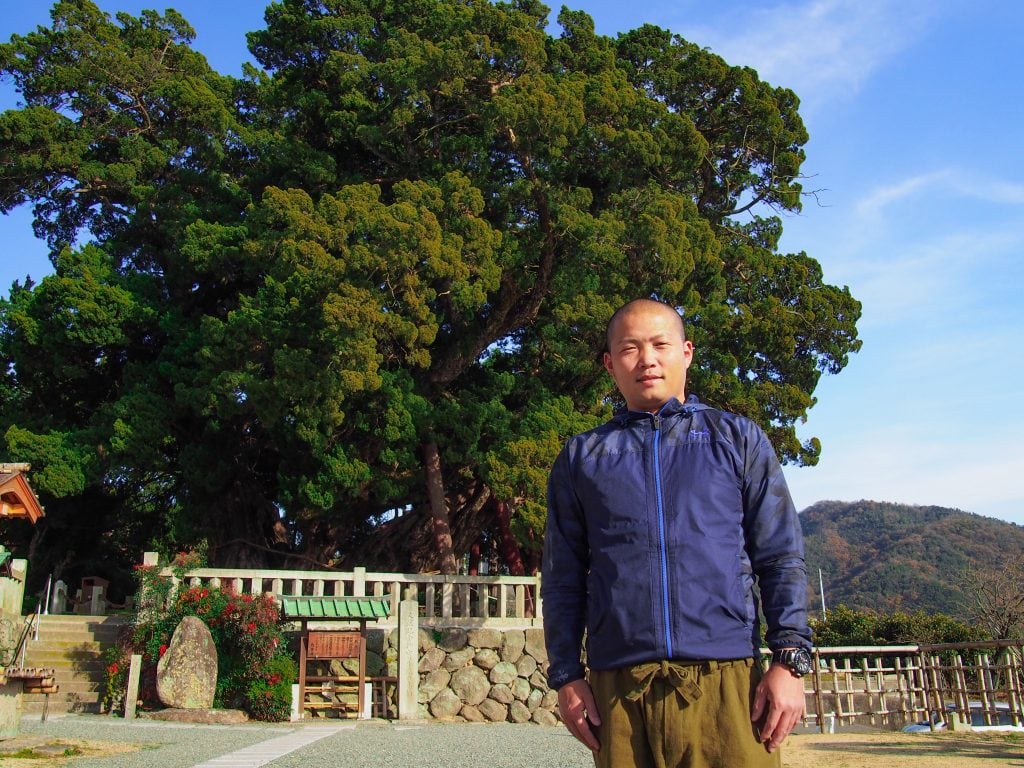
The top photo of this article was taken by the main priest-monk of T54, Housho-in. He was inside of the stamp office and we started chatting while he was handwriting the stamp in my book. Then, he kindly offered a quick guided tour around the huge ancient shinpaku juniper tree, which is actually the biggest juniper tree in Japan and has lived for more than 1500 years.
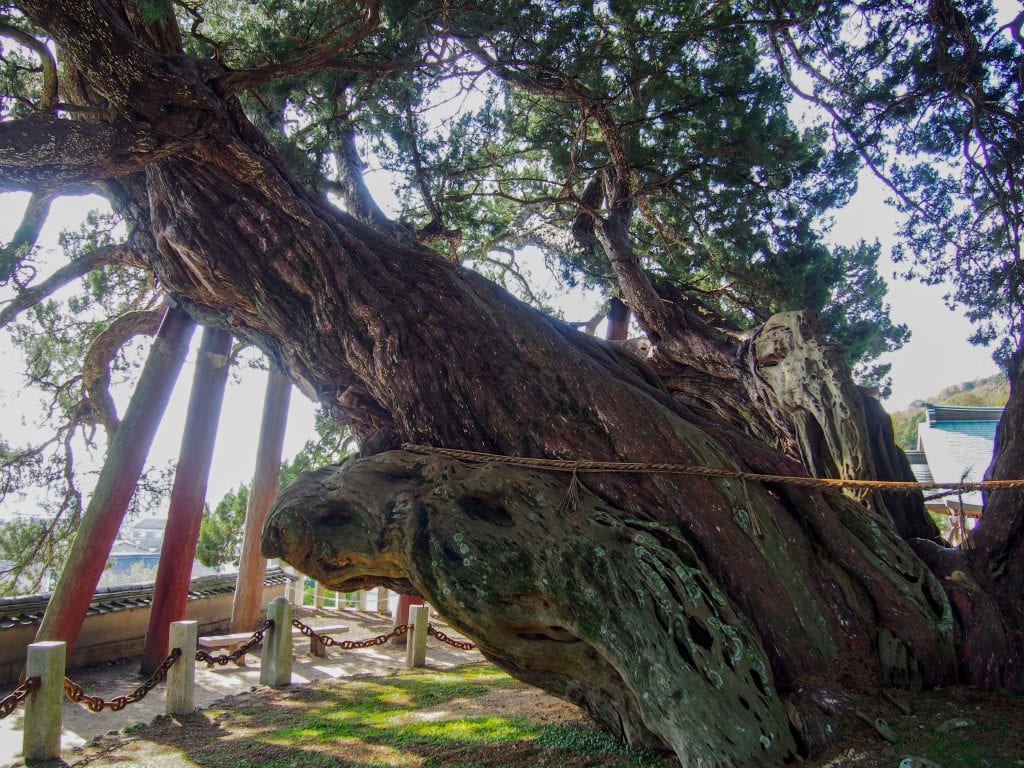
The trunk of the tree has many weird-looking burs. He told me some parts of the tree look like holy animals and he pointed each of them for me. Elephant, dragon, turtle, and so on…
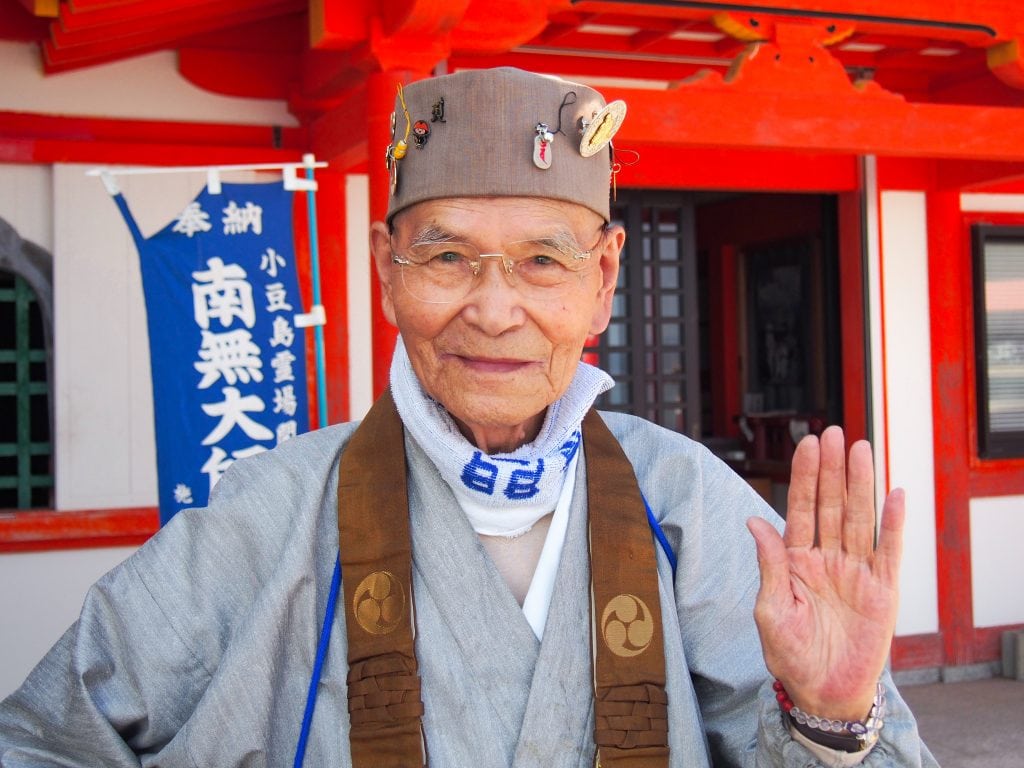
Another monk I met at T60, Goutokutsu took my photo for me. He was one of the most memorable people in my life. He said he was in his early 90’s at that time but the way he talked and his quick response in our conversation didn’t make me believe it at all. He was very nice and calm, and his face was shining with a glow of curiosity.
As far as I remember, he said he was a college student when WWII ended. He then became a businessman travelling around the world. After his retirement, he became a monk and went to graduate school. He was in his 80’s when he completed a doctoral course at a university! He liked taking pictures, so he took my camera and told me standing by the seaside Jizo-bosatsu statue. “See? I am a good photographer. You two are wearing the same hat.”
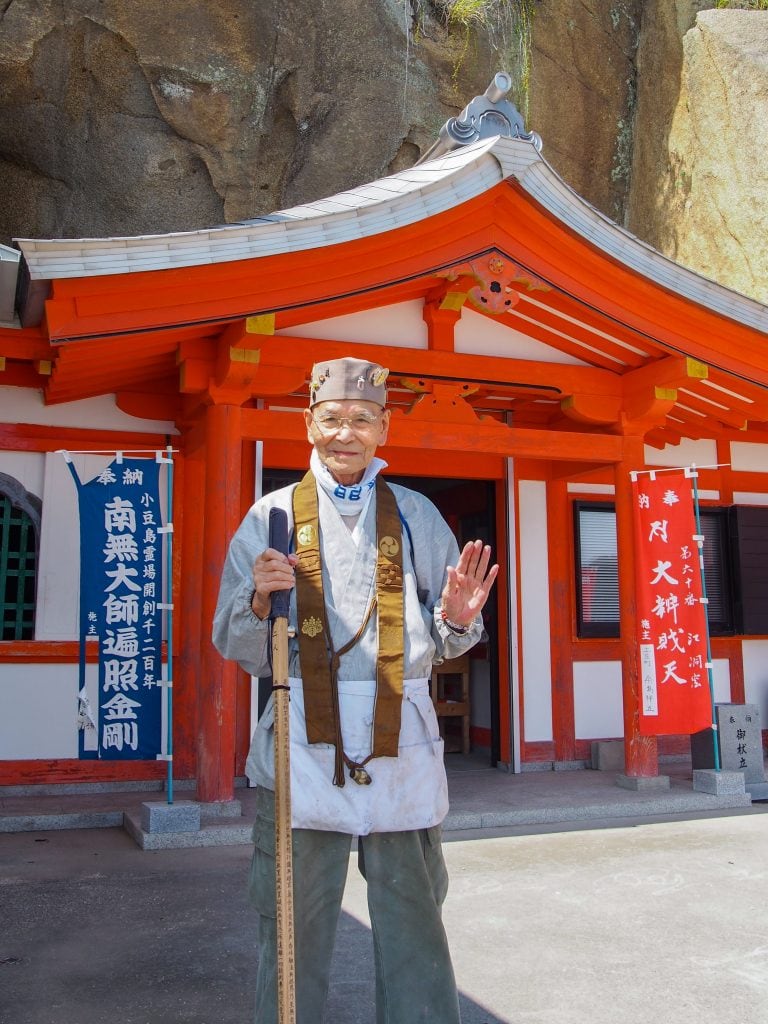
Monk at T60 
Masako at T60
The Japanese sometimes describe someone so nice that he may have reached to a holy level, or probably Buddha level in this case, as “he has a halo of light on the back of his head.” This monk, just standing there, I definitely felt a big halo of light brightened his entire body.
Most of the temples which offer stamps seemed to be run only by a residential monk and his family. So, at almost every stamp office, I found monks sitting there waiting for pilgrims. They all were very nice and friendly and usually started small talk with me, probably out of curiosity. Just like during my Shikoku 88 walk and other pilgrimages, being a woman, walking by herself alone has a big benefit; more chance to be talked to by the locals and temple staffs.

Even at a temple stamp office, which had a note of “We are sorry that our stamp office staff is stepping out right now” put on the counter, I was greeted by this friendly smiling guy who blinked his eyes as soon as he saw me.
Getting stamps
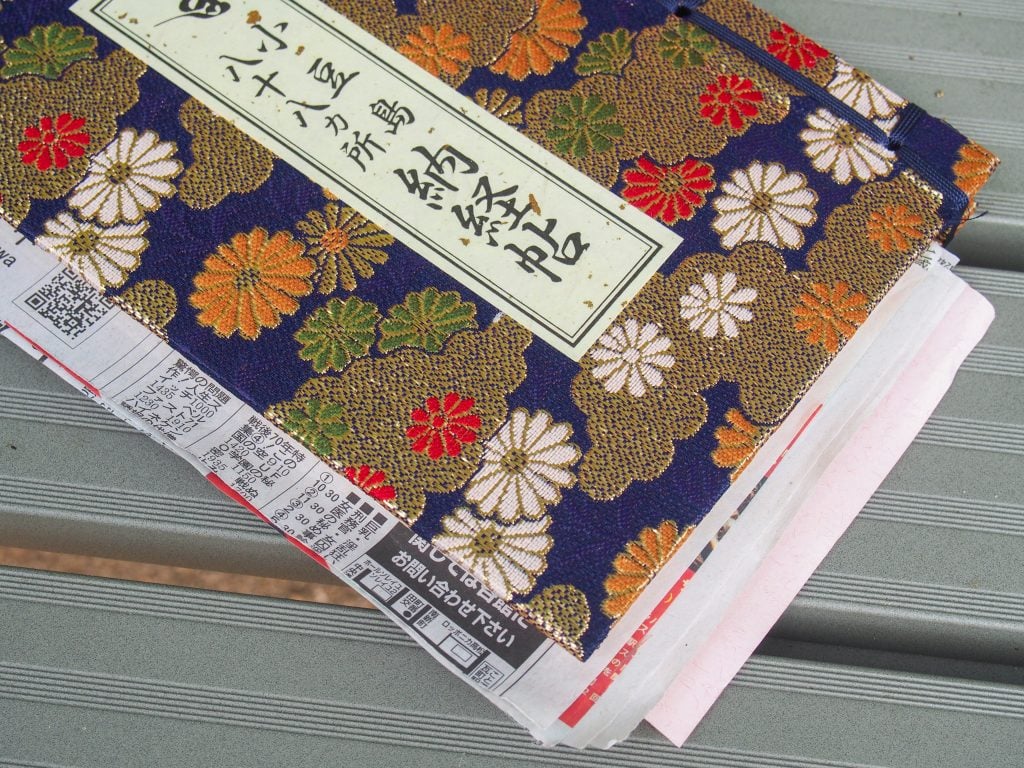
Almost two-thirds of Shodoshima 88 temples are not staffed all the time. Because of that, the most commonly used stamp book is the one that already has calligraphy parts printed on each temple’s page and all you have to do is getting red stamps on it by temple staff at bigger temples or sometimes by yourself.
I wanted to have mine like Shikoku 88’s stamp book so I bought the special type of Shodoshima 88 stamp book only available at the head temple. You have to pay 150 yen more for each temple to have this all hand-written stamp. 150 multiply by 88 already make a huge difference for budget pilgrims, and besides, there is a high chance that you may find no one at stamp offices at the temples which take care of offering stamps for their own temple and other nearby unstaffed temples.
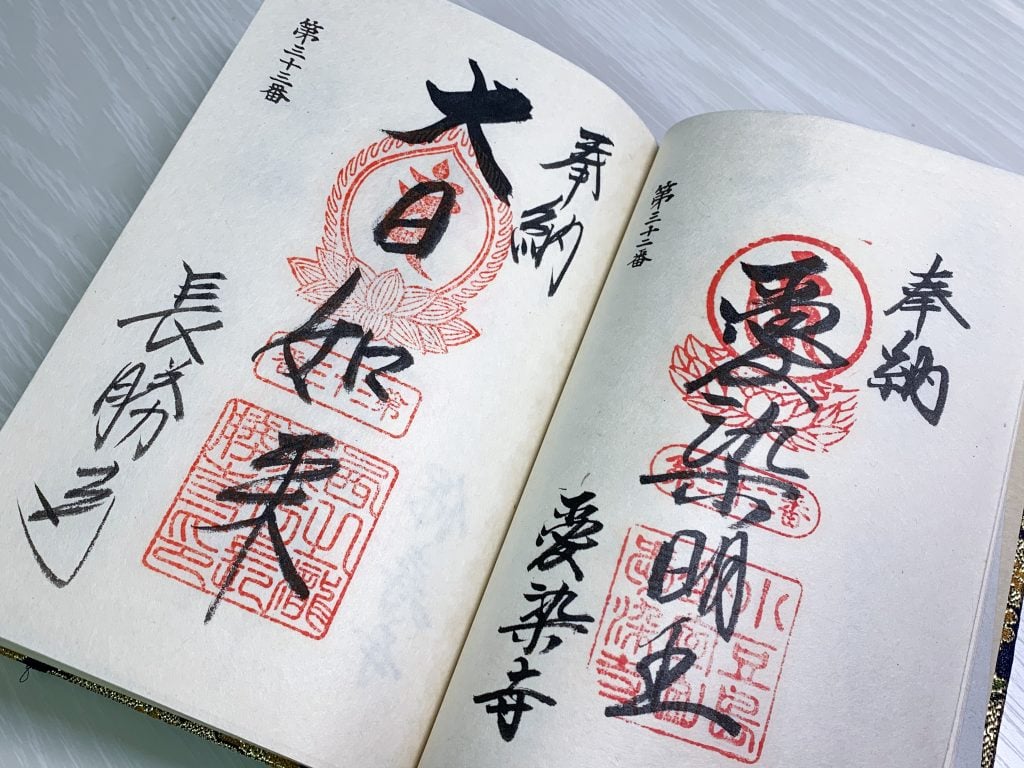
However, luck is usually with me when it comes to pilgrimages. I had no problem to get hand-written stamps at all 30 temples. Probably because it was fall pilgrim season, monks were there at almost all temples’ stamp offices.
At one or two temples, the stamp office was closed but instead, there were ready-made stamps on pieces of paper that I could pick up and left money in the designated box. At one temple, the monk was out but his wife was there. She took my stamp book and told me to go ahead to the next temple. As soon as the monk came home and wrote my stamp book, she drove to chase me and gave my stamp book back to me.
People are usually very surprised when I told them I got all hand-written stamps very easily without waiting for a long time or having to return to temples another time. They all said I was extremely lucky. So, I guess it should be safer to get the most commonly used regular stamp book, for pilgrims who don’t have time for extra temple visiting, especially for walkers.
Is Shodoshima 88 easier?
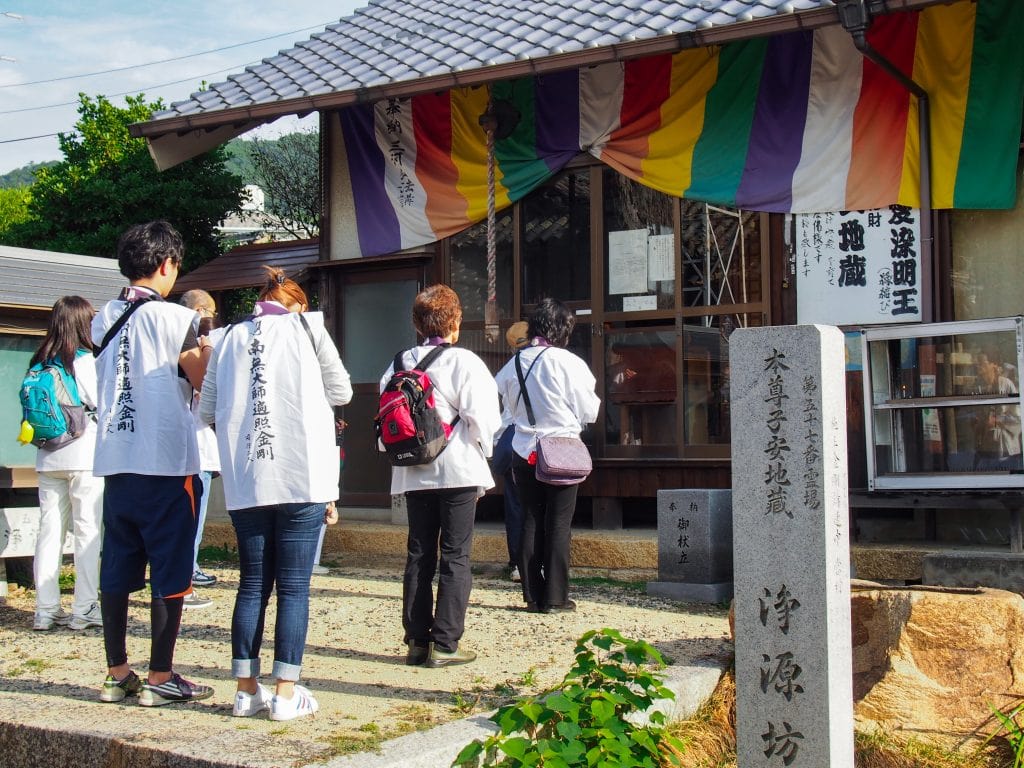
I sometimes encountered other pilgrims at the temples. Most of them were small groups of friends or families and all were visiting temples by car. I didn’t see the bus tours of pilgrims while I was walking.
Shodoshima seems to be quite a popular destination for bikers and I actually saw some non-pilgrim bikers, especially when I was walking along wider coast roads.
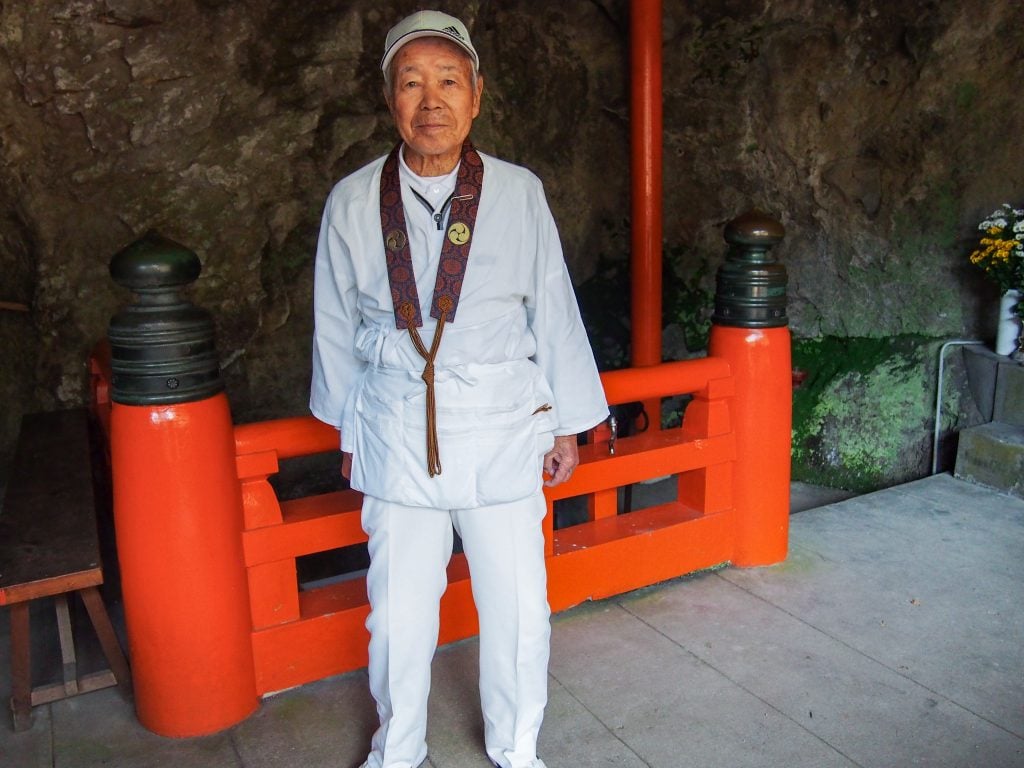
On the natural trails, I never saw any other walking pilgrims or hikers. The only individual pilgrim I saw at T18, Sekimondo was actually a local islander, who said he often came to this temple for a walk. I believe he said he was early 90-something (yes, again) at that time. He was almost hopping up and running down the stairs with no problem!
Even at the lodgings where I stayed, I didn’t really see many other guests. But I am sure if that was Japanese standard vacation season, I should have seen many more people. I also met a mother and her young daughter inside the onsen right by Olive Park. I found they were from Tottori prefecture and came to Shodoshima many times a year for pilgrimage. The friendly mom told me her faithful grandma loved the Shodoshima 88 pilgrimage, so they often come all the way to this island since she was little. Shodoshima 88 has not been so well-known yet compared to the Shikoku 88, but it does seem to have quite a few hard-core fans who support this small island’s pilgrimage throughout history.
So, is Shodoshima 88 pilgrimage easier compared to Shikoku 88? I have been asked this question many times. I was even asked this on the ferry to return to Takamatsu after I completed walking all 88 temples. Everybody seems to have some reasoning why they would want to try walking Shodoshima 88 instead of Shikoku 88. 150 km vs 1200km. 7 to 10 days vs 40 to 60 days. Much shorter distance should be easy!
Also, some people assume that walking Shodoshima 88 may be a good pre-training for walking all Shikoku 88.
Well, I usually say “NO” to that question, actually.
Even as a person who had walked entire Shikoku 88 plus Bekkaku 20, as well as Shingon 18 head temple pilgrimage and 4 out of total 6 trails of Kumano Kodo, Shodoshima 88 was quite tough. To those who have not walked Shikoku 88 but are thinking about doing Shodoshima 88 first, I always suggest walking Shikoku 88 first.
Imagine picking up all kinds of hard and tough parts from my 50 days of walking in Shikoku 88 and putting them to be condensed into seven days walking in this small island. That’s Shodoshima 88!
Click the photos for a larger view.
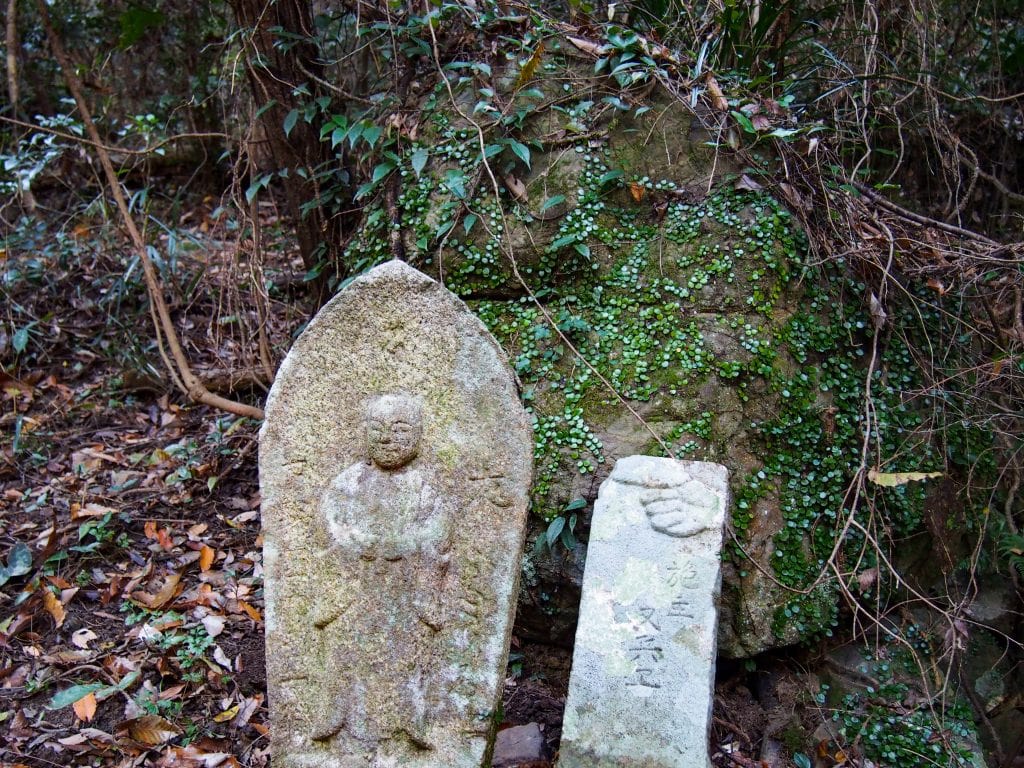
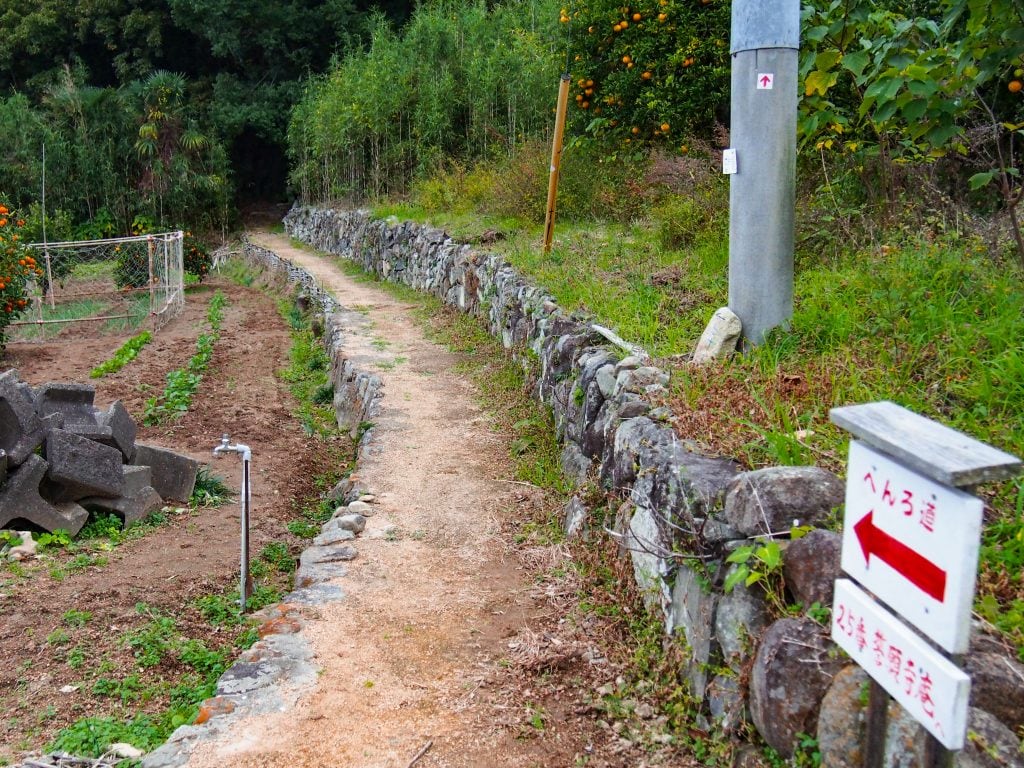


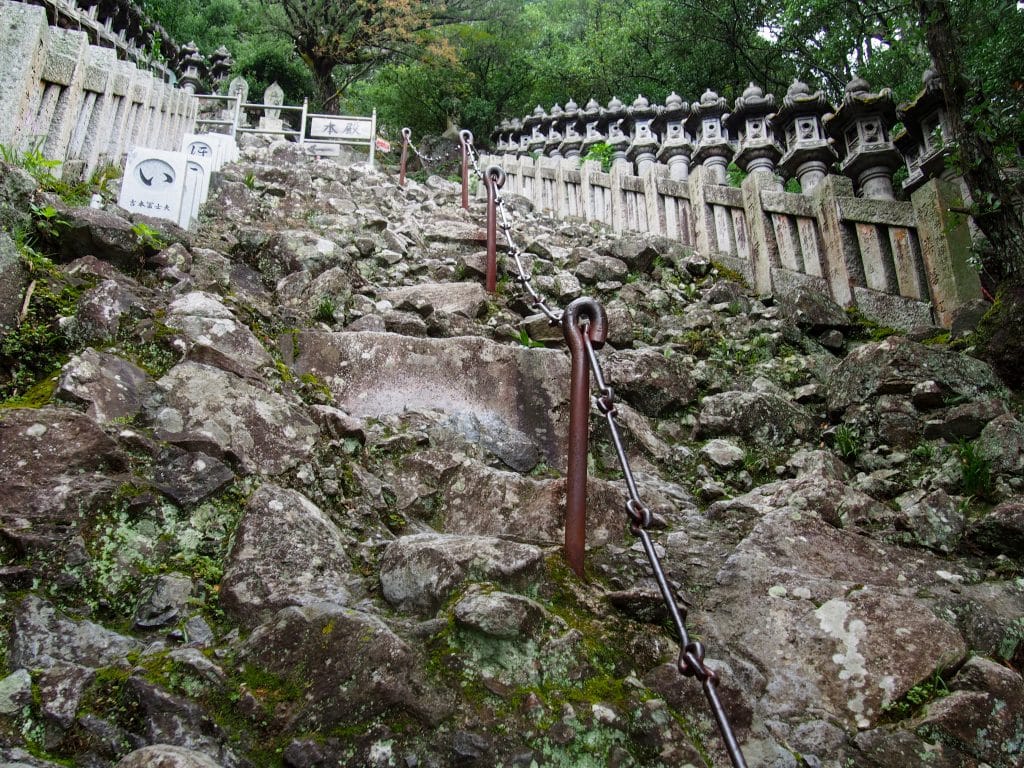
The trails are well-maintained and there are enough signs but I am worried that it would be a bit hard to find and read them for a total beginner who hasn’t get used to how to find them in Shikoku 88. Also, as David also described in his blog posts, there are fewer shops and lodgings, fewer local people you would pass by, and a more complicated stamp system which would be challenging for beginners.
I felt the trails throughout the mountains were quite steep in Shodoshima. There are no long-distance mountain trail parts like Shikoku 88’s infamous die-hard trails to Temple 12. Shorter but steeper. Also, the trails to and from those rocky mountain temples create a natural obstacle course. I actually really liked and enjoyed them. But I don’t lie, it was seriously scary when I had to walk down THIS in rain.
Some other landmarks along the pilgrim trail
Though David’s posts covered most of all tourists attractions along the pilgrimage trails in his blog posts, I would like to introduce some other places I happened to find during my walk which he didn’t mention. Probably because I always love natural landmarks with rocks and stone for some reason…
Nagasaki Shishigaki
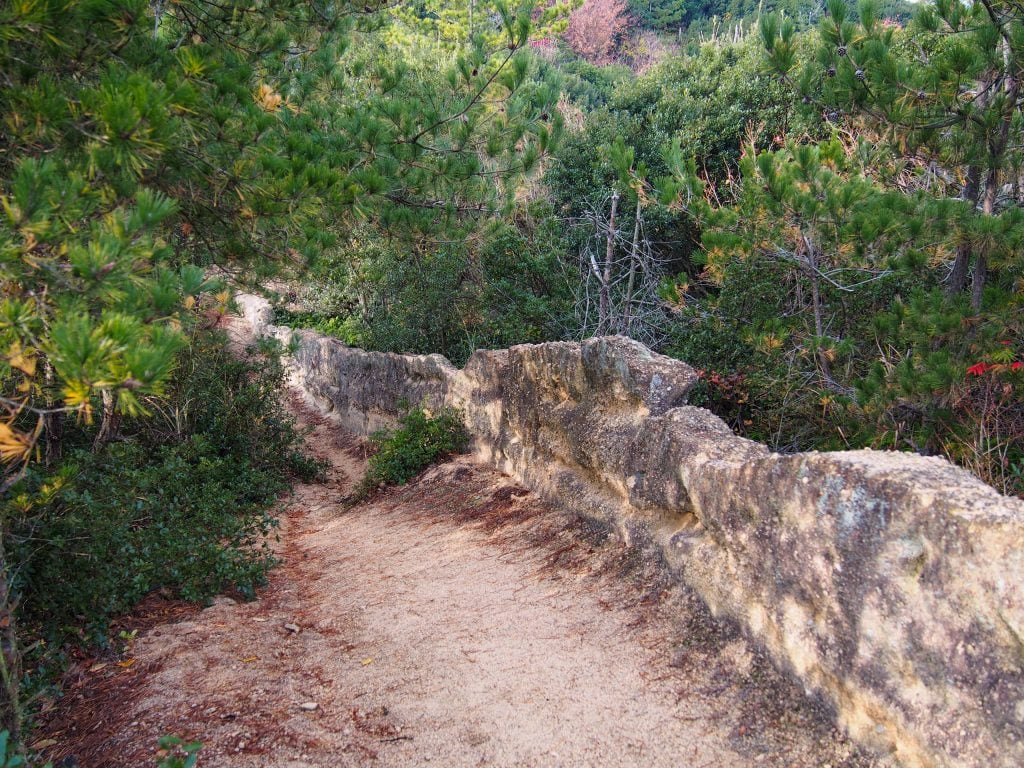
Shishigaki are man-made walls made from soil and stones to prevent wild boars from eating farm products. Shishigaki are found many parts in Shodoshima and were built in the late 18th century. Nagasaki Shishigaki is located on the old pilgrim trail to T28, Yakushi-dou.
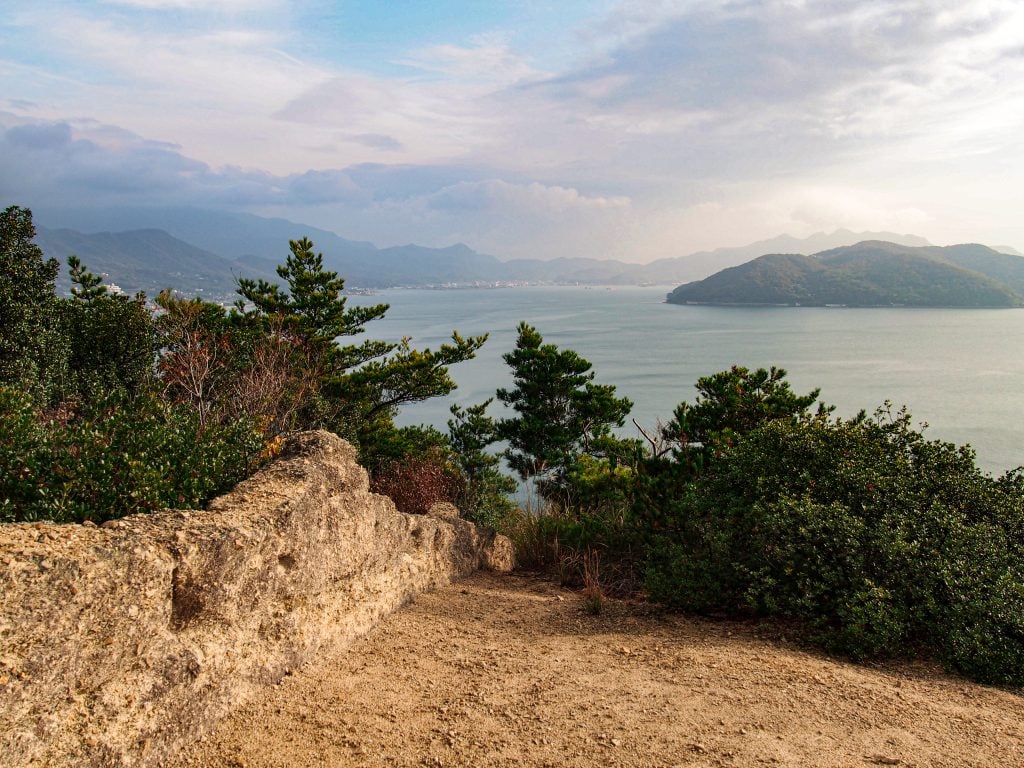
After quite a short walk around the mud wall, you can get to a spectacular viewpoint to see the small peninsula where T6 is located at the other side of the sea.
Tengu-iwa quarry park
Shodoshima is rocky mountain island. You can find several old quarry sites turned into natural parks all around the island. In the mid 17th century, giant rocks from these quarries were shipped to Osaka to re-build Osaka castle’s stone walls.
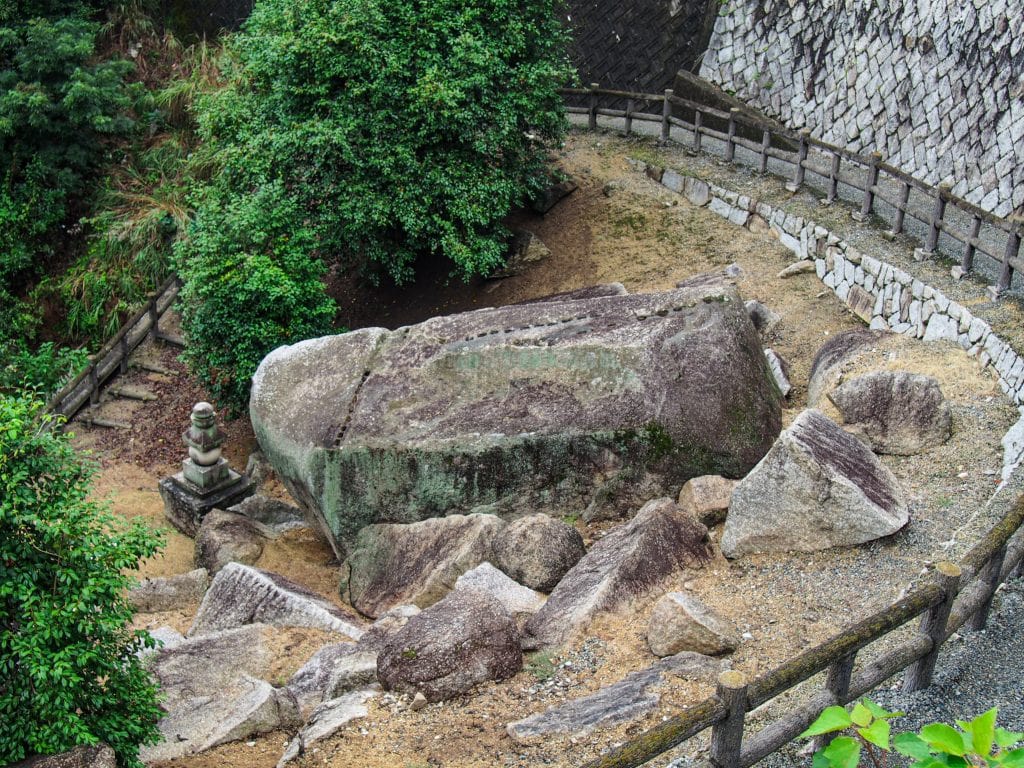
When you are walking east side of the island, there are some old quarries along the pilgrimage route between Temple 86, Atehama-an and 87, Kaitei-an. Tengu-iwa quarry park is one of them, closer to T87.
Left out gigantic stones were scattered in woods and a walking path is maintained to look around them.
Ikeda Saziki (outdoor theatre)
Right near T33, Chousho-ji, you will find these many-tiered walls and may think these are remains of old castle walls. 18m to the top and 80m width, Ishida Saziki was built to work as a seating area for people who came to see nearby Shinto shrine’s festivals. Even today, local people still use this outdoor theatre to have festivals and events.

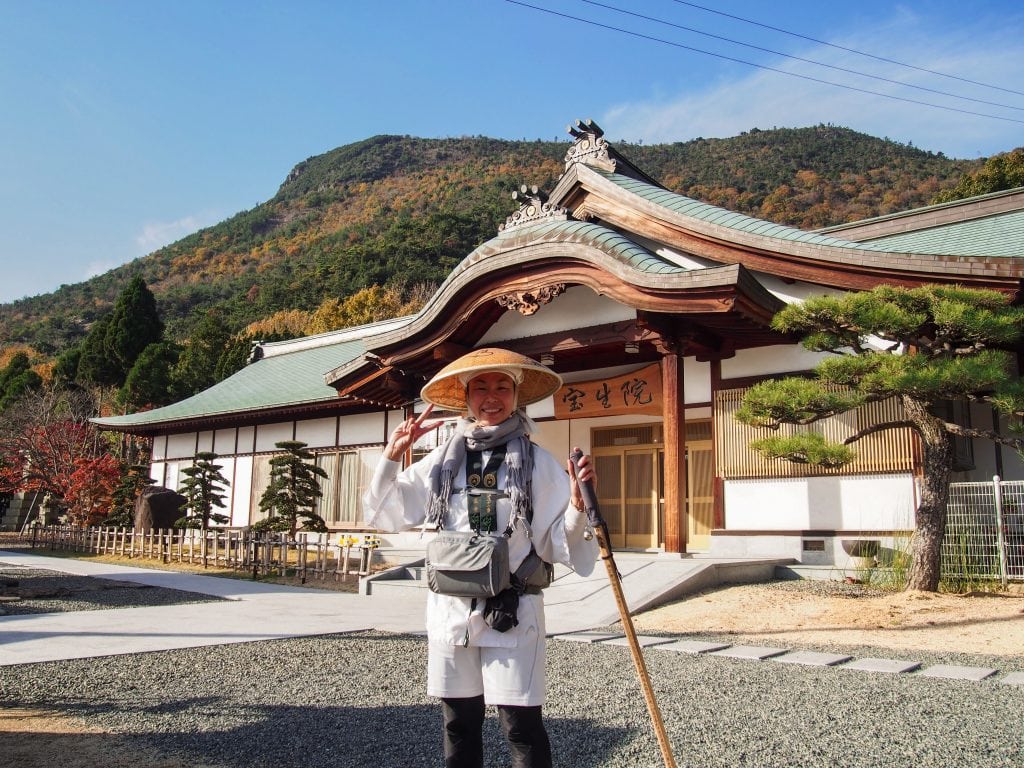
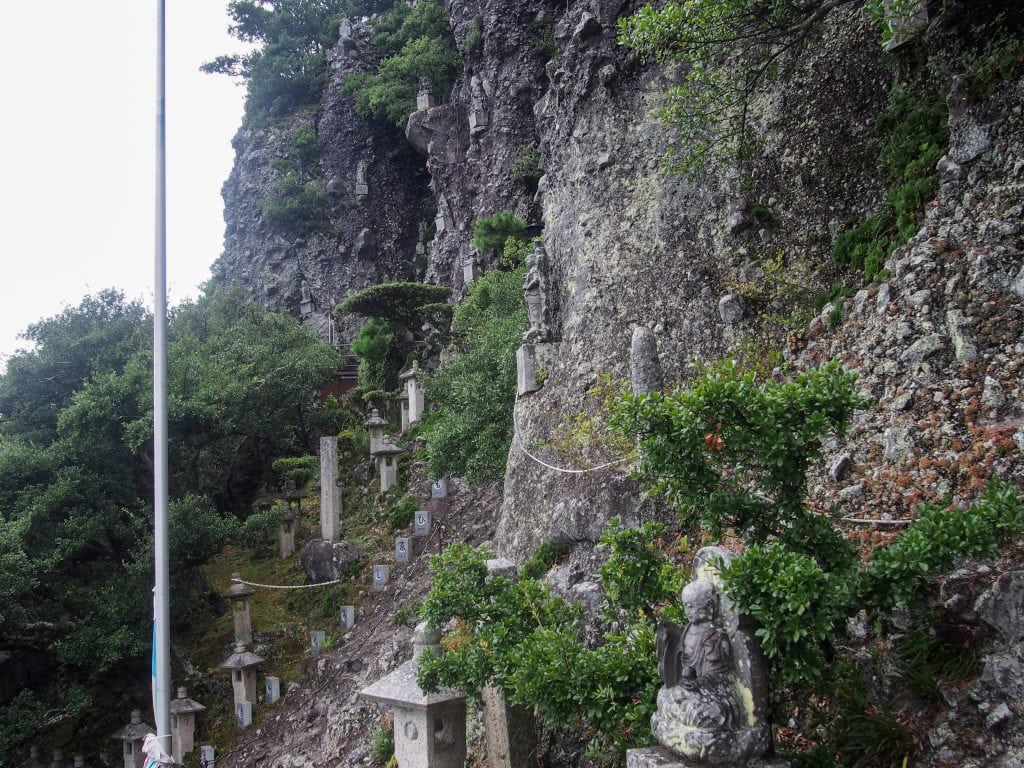
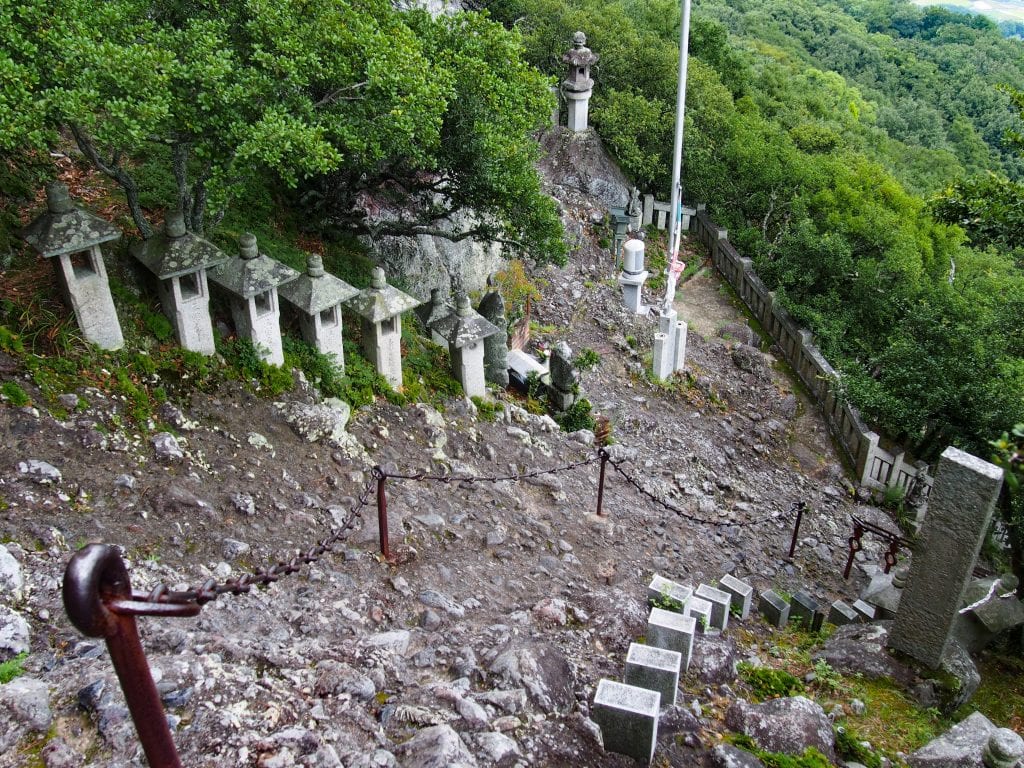
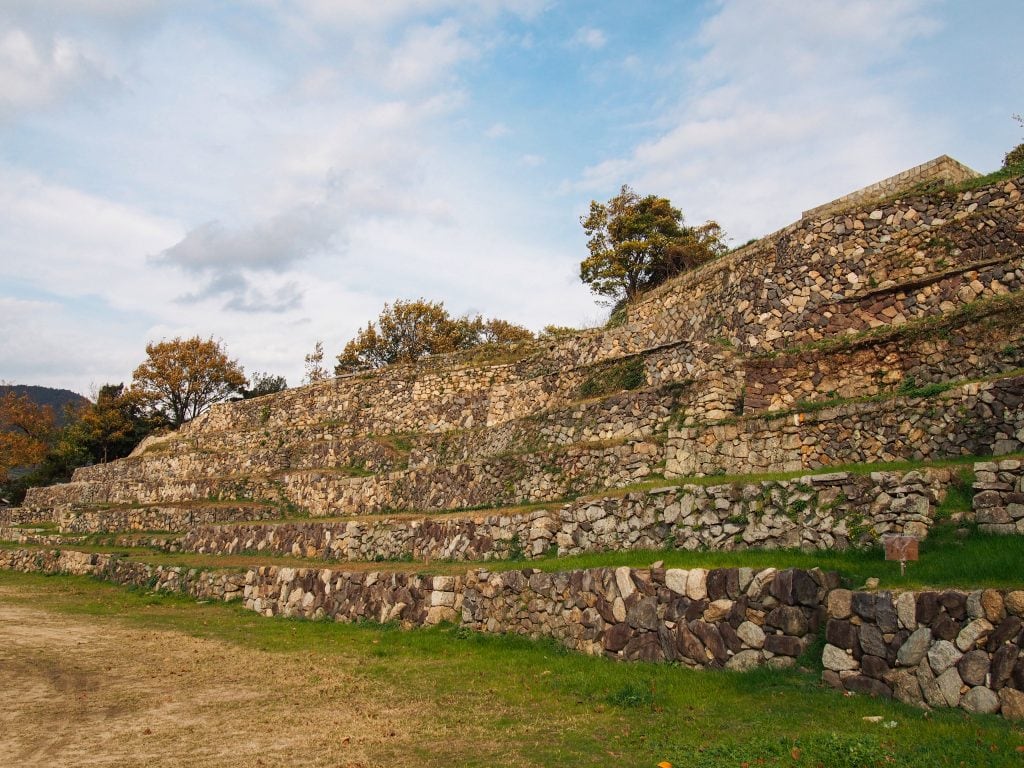
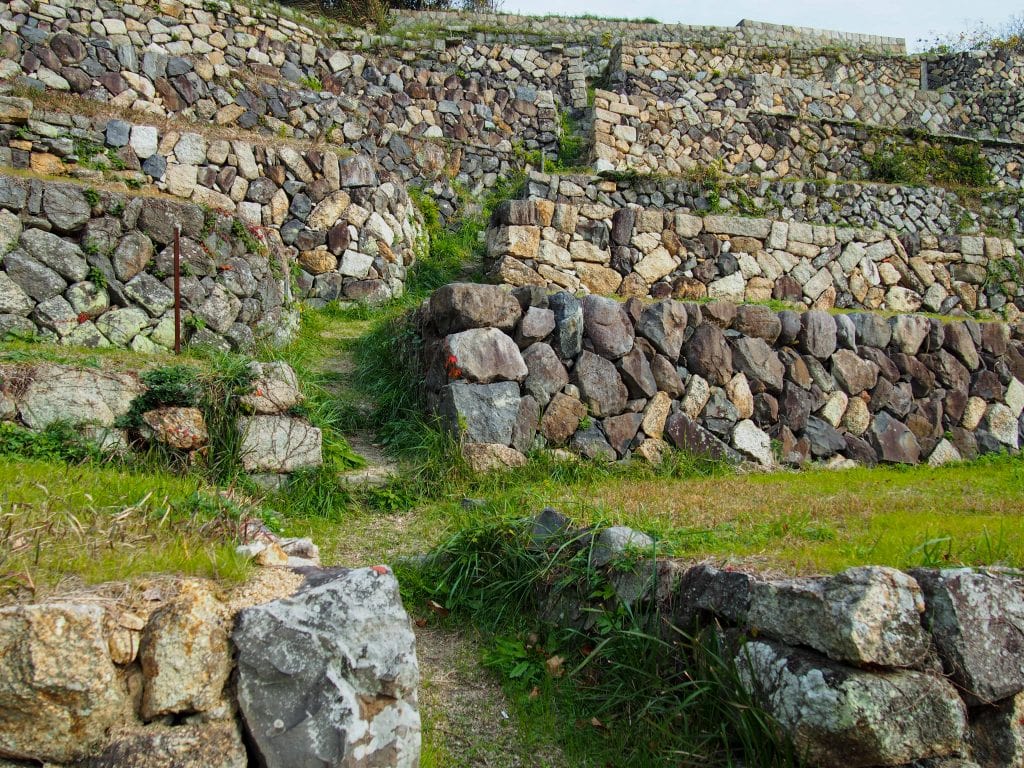
Are there any specific pilgrimages or trails you have in mind for future journeys? Regards Telkom University